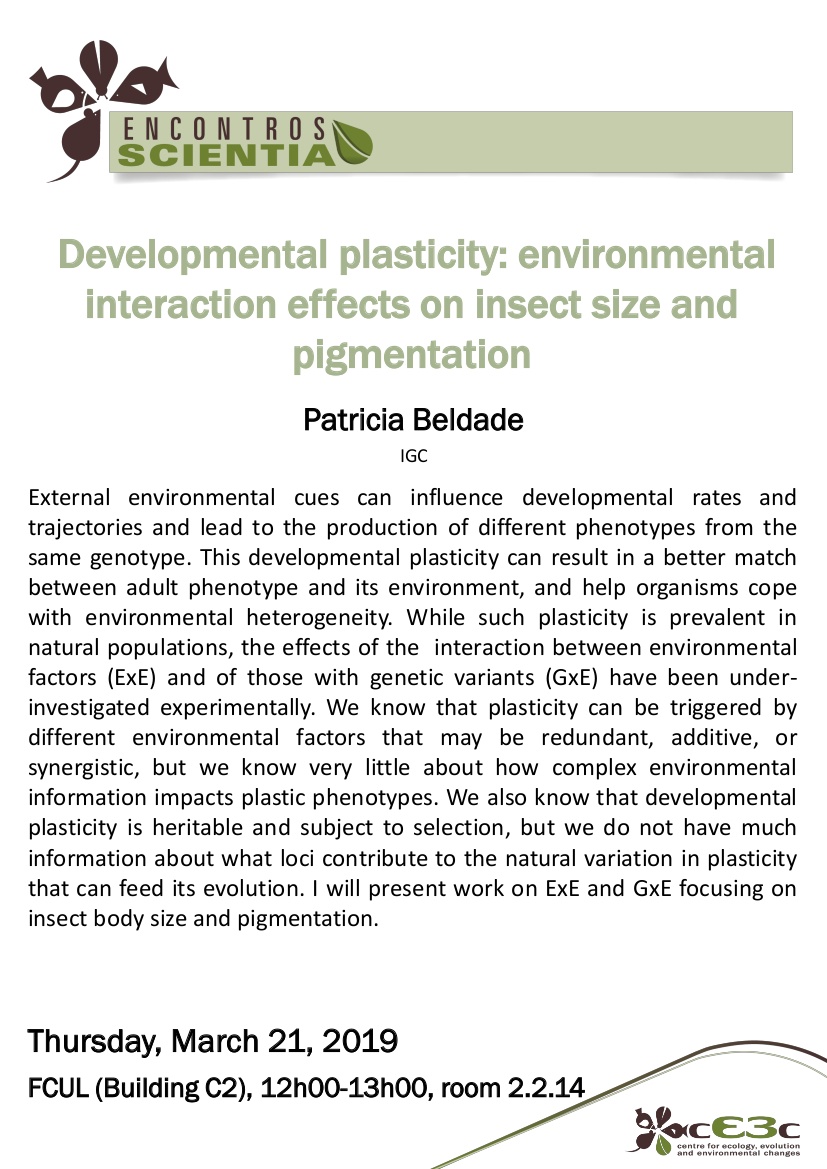Developmental plasticity: environmental interaction effects on insect size and pigmentation
Patrícia Beldade
Instituto Gulbenkian de Ciência - IGC
External environmental cues can influence developmental rates and trajectories and lead to the production of different phenotypes from the same genotype. This developmental plasticity can result in a better match between adult phenotype and its environment, and help organisms cope with environmental heterogeneity. While such plasticity is prevalent in natural populations, the effects of the interaction between environmental factors (ExE) and of those with genetic variants (GxE) have been under-investigated experimentally. We know that plasticity can be triggered by different environmental factors that may be redundant, additive, or synergistic, but we know very little about how complex environmental information impacts plastic phenotypes. We also know that developmental plasticity is heritable and subject to selection, but we do not have much information about what loci contribute to the natural variation in plasticity that can feed its evolution. I will present work on ExE and GxE focusing on insect body size and pigmentation.
Thursday, March 21, 2019
FCUL (Building C2), 12h00-13h00, room 2.2.14

